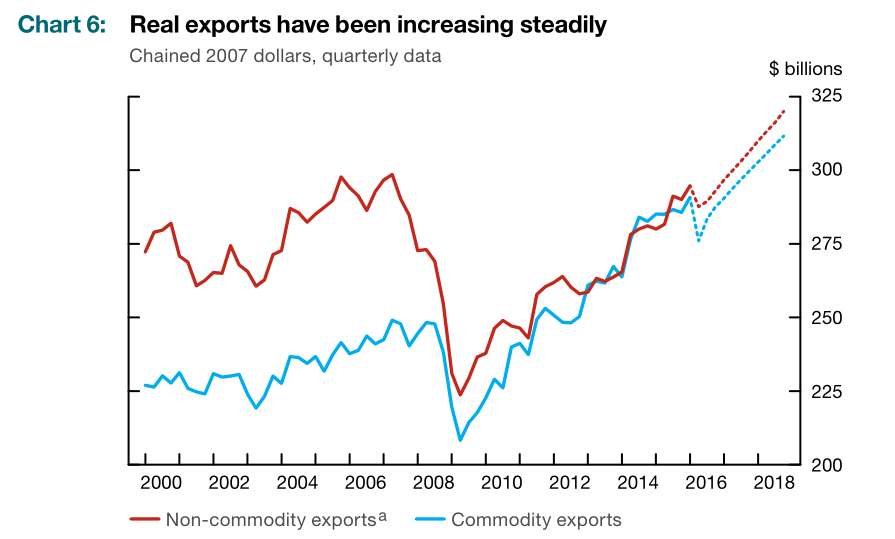The BOC is in denial on the real story on Canadian exports
There are two charts on Canadian exports and the Bank of Canada is in denial about one of them.
The BOC decision on Wednesday is a foregone conclusion Wednesday -- no change. And there will be little guidance either as the BOC decides to wait and see how the economy unfolds.
Bank of Canada Governor Stephen Poloz has staked his reputation on the idea that after the commodity bust, the weak Canadian dollar would lead to a renaissance of the long-dormant Canadian manufacturing industry.
The idea was mocked at the time. Why build a factory in Canada to export to the United States when you can build one in Mexico?
Yet Poloz has continued to double down. After the June BOC decision, he repeatedly touted the performance of Canadian exports. He touted this chart of non-commodity exports, which looks decently impressive, even if exports haven't returned to 2007 levels.

When he was asked by a reporter to defend his belief that non-commodity exports would pick up the slack, instead he went on offence. It led to this testy exchange.
There is one big problems with what Poloz said -- the currency.
Those charts are in Canadian dollars.
What really matters for the Canadian looking for a job or the company looking to invest is volumes. To illustrate: Say you manufacture hockey sticks in Saskatchewan. You export much of what you make and your price is $10, in US dollars. Let say you sell 1 million sticks; that's $10 million USD. In 2012, that's also $10 million CAD, because they were trading at parity.
Skip ahead 4 years and you're still selling 1 million sticks and your revenues are still $10 million USD but suddenly the Canadian dollar has fallen so you're now getting $13 million in CAD terms.
You haven't ramped up production, invested in equipment or hired a new employee but your exports have risen 30% and the BOC is taking credit for that progress.
Of course, you could use that windfall to reinvest, grow production and try to sell more sticks. But the numbers show that isn't happening. Here is the real picture, shown by noncommodity exports in US dollar terms:

They've fallen 22% since June of 2014.
So when Poloz takes credit for boosting exports, all he's done is an accounting trick to save face on a policy hypothesis that was misplaced from the start.



